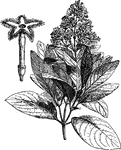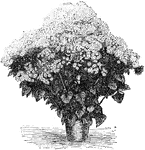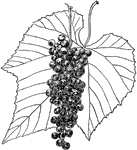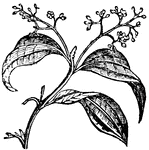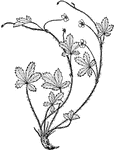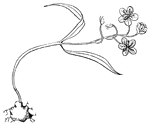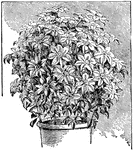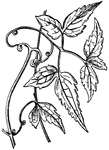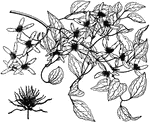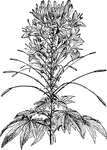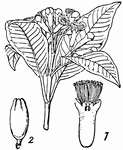775 illustrations of flowers and shrubs including: calla lily, camphor, candlewood, capsicum, carnation, cashew, castor-oil plant, catchfly, catkin, catnip, celandine, chamomile, checkerberry, chickweed, chicory, cinnamon, cinquefoil, cloudberry, clove, clover, cocoa, coffee, colocasia, comfrey, coreopsis, coriander, cornflower, cotton, cowbane, cowslip, crassula, creeper, crocus, and crowfoot.
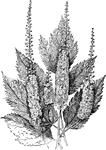
Cimicifuga Racemosa
The common name of cimicifuga is bugbane. The racemosa variety grows three to eight feet tall. The flowers…
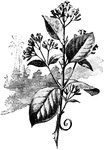
Cinchona
"Bolivia raises some of the best cinchona, although excellent cinchona is also raised in Peru and all…

Cinchona
Cinchona is a genus of about 40 species in the family Rubiaceae, native to tropical South America. They…
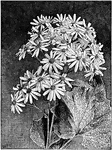
Cineraria Stellata
Cineraria stellata is a popular form. It is a florists' variety. It has star-like single flowers.
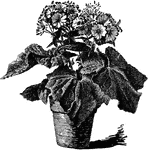
Florists' Cineraria
Illustrated is a small plant of florists' cineraria. The plants run in white and in shades of blue,…

Juglans Cinerea
A tree native to North America featuring light wood and edible nut. The Cinerea are used to make brown…
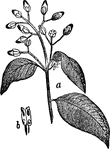
Cinnamon
"Cinnamon: a, end of branch, with leaves and flowers; b, four-celled anther." — Chambers' Encyclopedia,…

Cirsium Muticum
Cirsium muticum is a purple flowered thistle. It is found in low grounds from Newfoundland to West Virginia.
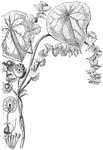
Cissampelos
"Cissampelos tropaeolifolia. 1. a female flower; 2. a portion of a fruit, with the seed laid bare; 3.…

Cissus Discolor
Cissus discolor is a smooth, tendril climber. The branches are slender with four or five ribs or angles.…
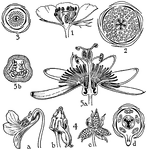
Orders of Cistaceae, Bixaceae, Violaceae, and Passifloraceae
Flowers of the orders of cistaceae, bixaceae, violaceae, and passifloraceae are pictured. These flowers…

Cistus
"Cistus Berthelotianus. 1. a vertical section of ovary and calyx; 2. a seed cut through; the pointed…

Cistus Laurifolius
Cistus laurifolius grows six feet tall. The flowers are two to three inches wide. The flowers are yellow.…
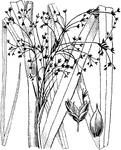
Cladium
Spikelets with the uppermost scale only enclosing an achene; our commonest species has saw-edged. cutting…

Clarkia Elegans
Clarkia elegans grows one to six feet tall. The flowers are purple or rose colored. There are some white…
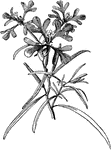
Clarkia Pulchella
Clarkia pulchella grows between twelve and eighteen inches tall. The flowers are lilac and there is…
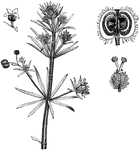
Cleavers
"Galium Aparine; 1. a flower; 2. a young fruit without the corolla; 3. a perpendicular section of a…

Clematis
"A genus of plants of the natural order ranuculaceae having four colored sepals, no corolla, and fruit…
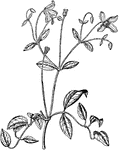
Clematis Eriostemon
Clematis eriostemon has four, blue, spreading sepals. The plant climbs eight to ten feet tall. It is…

Clematis Florida Bicolor
The purple stamens of clematis florida bicolor are somewhat petal-like and form a dense, purple head…
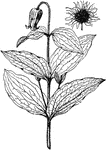
Clematis Fremontii
The flowers of clematis fremontii are purple and drooping. The leaves are three to four inches long.

Clematis Jackmanii
The flowers of clematis jackmanii are flat and five to six inches broad. The flowers are usually clustered…
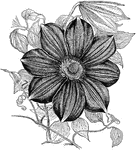
Clematis Lawsoniana
The flowers of clematis lawsoniana are very large and rose purple, marked with darker veins. The flowers…

Clematis Lawsoniana Henryi
Clematis lawsoniana henryi is a derivative from clematis lanuginosa. The flowers are creamy white and…
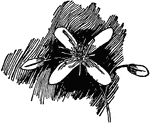
Flower of Clematis Paniculata
The flowers of clematis paniculata are one to one and a half inches across. The flowers are dull white…
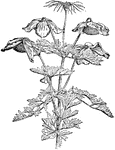
Clematis Stanleyia
Clematis stanleyia is an erect, robust herb that grows three feet tall. The flowers are one to three…
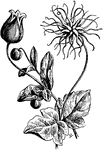
Clematis Viorna
Clematis viorna grows eight to ten feet tall. The flowers are pitcher shaped and grow alone on each…
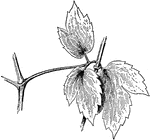
Clematis Virginiana
The leaves of clematis virginiana are cut toothed. The bases are often heart shaped. The leaves are…
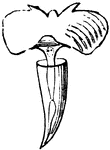
Cleodora
Cleodora refers to a genus of plants in the family Euphorbiaceae. The best known member of this genus…

Cleome Spinosa
The common name of cleome spinosa is giant spider plant. The plant is clammy, strong scented, and grows…
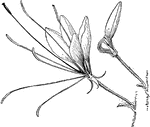
Cleome Spinosa
The common name of cleome spinosa is giant spider plant. The flowers have four petals. The flowers are…
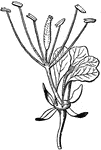
Flower of a Cleome
Flower of a Cleome of the section Gynandropsis, showing broadened receptacles to bear petals, lengthened…
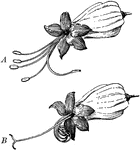
Clerodendron
"Flower of Clerodendron in two stages. In A (earlier stage) the stamens are mature, while the pistil…

Clerodendron Fallax
Clerodendron fallax is an ornamental species. The stem is erect, shrubby, and branching after flowering.…

Clerodendron Thomsonae
Clerodendron thomsonae is a tall, twining, evergreen shrub. The flowers are white and light crimson.…

Clerodendron Trichotomum
Clerodendron trichotomum is a slender but erect, graceful sub-shrub. It grows four to ten feet tall,…

Clethra Tomentosa
The common name of clethra is white adler. The tomentosa variety grows two to eight feet tall. It is…

Orders of Clethraceae, Pyrolaceae, and Ericaceae
Pictured are the orders of clethraceae, pyrolaceae, and ericaceae. The flowers of these orders that…
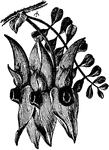
Clianthus Dampieri
The common name of clianthus dampieri is glory pea. The shrub grows two to four feet tall. The flowers…
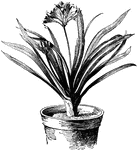
Clivia Miniata
The leaves of clivia miniata are sword shaped and taper to a point. There are twelve to twenty flowers…
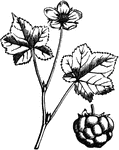
Cloudberry
A simple plant four to eight inches high. The flowers are large and white; and the berries a yellow&orange…
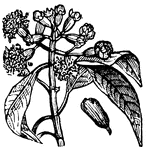
Clove
The clove gets its characteristic name from its unopened dried flower buds which are sold for medicinal…

Clove
Cloves are dried flower buds. Illustrated are (1) a spray of leaves and flowers, (2) an expanded flower,…
